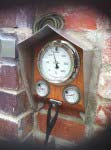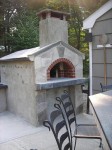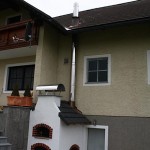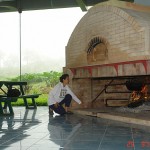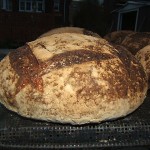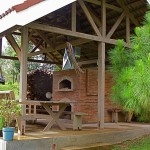back to board Main Page
Re: Ventilation
From the WFO board
Posted by Rado
In Reply to: Ventilation posted by John K
John,
There is ventilation, plenty of spaces under roof tiles and at peak too, or between walls end and where roof is attached under. Also, there is not water leaking into the structure, it's sealed. If it was not sealed water would do damage with time as would to any other masonry. Firebricks should not be exposed to the weather they absorb water and same applies to insulation.
Your thoughts about it are right. I wouldn't relay on that the steam from melted snow or rain water soaked-in inside under the dense material would simply exit into the oven and help create nice steamy atmosphere for lovely breads.
PS I have received several photos of all kinds of ovens that had steam damage. Same like with banging heated wet stones around camp fires. Although in brick ovens this happens mainly in extreme situations e.g. with too much water sucked in and at the same time with fast temp increase rate. Because firebricks form the oven of small segments, and are also little porous, steam escapes from in between them easy before a fast/big build up. If you put a little wet rock from a creek or fired pottery clay soaked in water into microwave oven it will go like angry popcorn, in 30 seconds as soon as the material inside reaches boiling temperature. If you put in same size little piece of wet firebrick or plaster the oven will just speed it's drying (don't put in big piece) ... funny but because it's porous steam finds ways to escape from bulk. It is same when looking at it right the other way around; if you put pizza onto hot floor inside the oven and if the floor was made of less porous material there would be steam creation under the pizza, otherwise moisture is well absorbed by firebricks ... just another reason not to use materials with higher alumina content in wood fired ovens because higher alumina content makes material less porous and it can be seen while cooking. r
- Re: Ventilation - Rado
- Re: Ventilation - John K
- Re: Ventilation - John K

Jamie and Katrina's brick oven with temperature gauge, in Victoria.
Concrete blocks used for the oven’s outer walls. By Joe in Connecticut USA
Wood fired family oven and chimney project by Robert in Austria
My oven with fireplace, cook food and heat water, by Joel in Philippines
Baking sourdough breads in quantity in Canada
Pizza oven and hut built by Tony in Philippines
